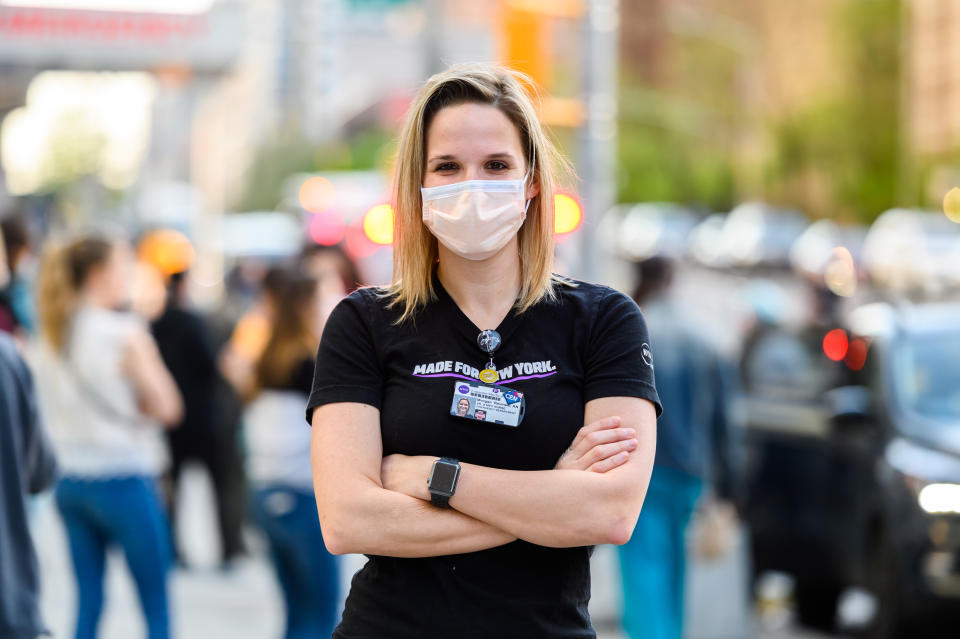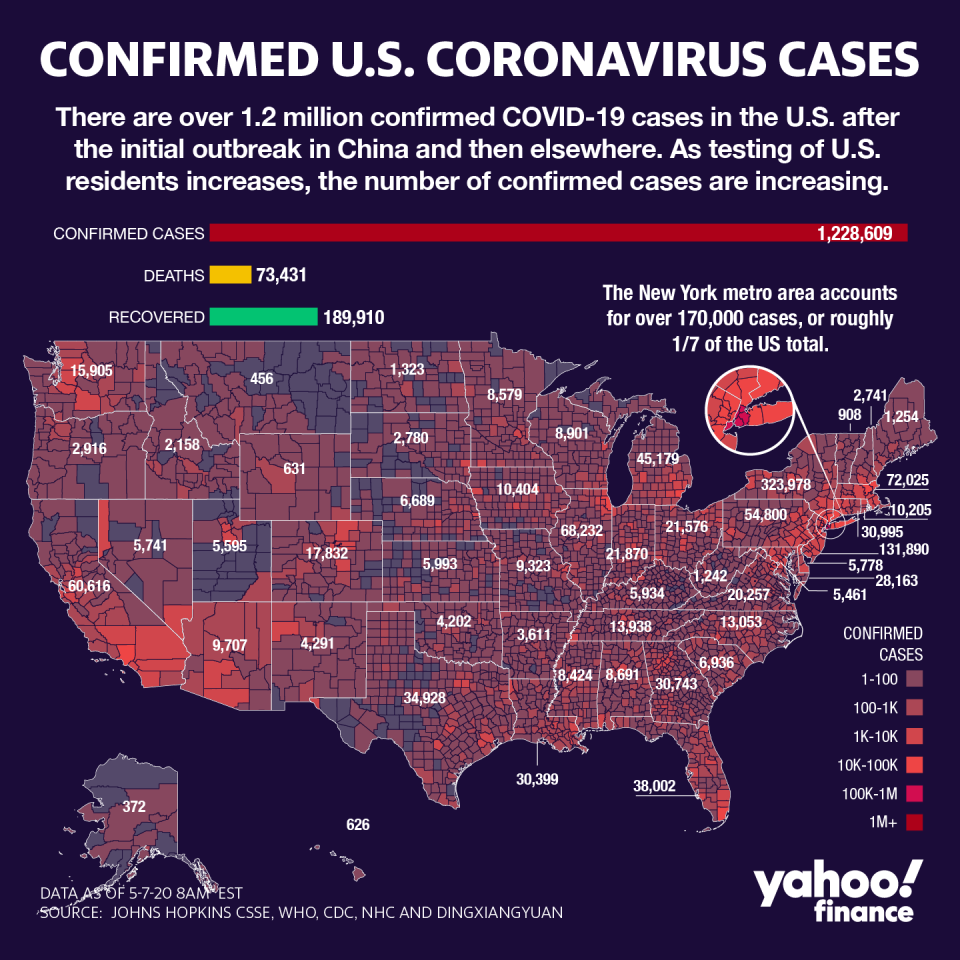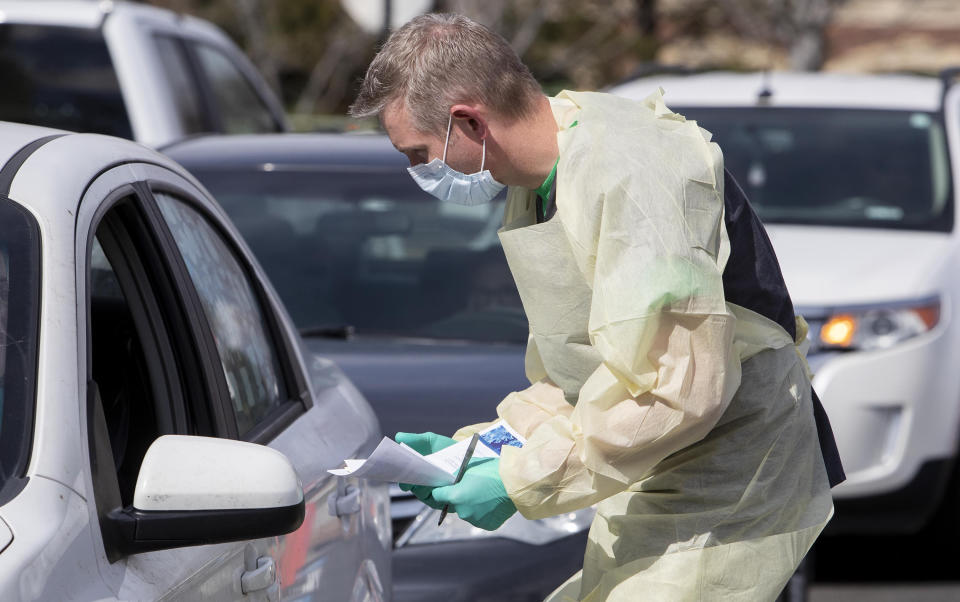New student loan forgiveness bill aims to help frontline health care workers amid coronavirus pandemic
A new bill by Congresswoman Carolyn B. Maloney (D-NY) proposes to help frontline health care workers with their student loans by cancelling their debt.
The legislation, titled ‘Student Loan Forgiveness for Frontline Health Workers Act,’ would establish both a federal and a private loan forgiveness program for student loans taken out to fund tuition to medical and professional training programs.
Health care workers who “made significant contributions to COVID-19 patient care, medical research, testing and enhancing the capacity of the health care system to respond to this urgent crisis” would be eligible.
“Frontline health workers are delivering care to the sickest patients and putting their own safety at great risk in order to keep doing their jobs,” Rep. Maloney, who cosponsored the bill with several other Democrats, said. “And in return, I believe that we have an obligation to ensure that they are relieved of the debt they incurred to train for this critical work … They should not have to worry about their financial security after the crisis has passed.”

Beneficiaries would include doctors, medical residents, medical interns, medical fellows, nurses, home health care workers, mental health professionals, nursing and medical students, lab workers, researchers involved in coronavirus testing/treatment/cure, and emergency medical services workers.
Another new bill from Reps. Ann Kuster (D-NH) and Brian Fitzpatrick (R-PA) is aimed at student debt forgiveness for all “essential workers.” The bill would give essential workers $25,000 in student debt relief or for college tuition or costs of a workforce development or continuing education program.
‘We haven't seen Republicans embrace student loan forgiveness’
Student loan experts were not sold on the political viability of the bill.
“For now, Rep. Maloney's legislative proposal is a symbolic one that faces real hurdles before it becomes law,” Andrew Pentis, a certified student loan counselor with Student Loan Hero, told Yahoo Finance, stressing that “we haven't seen Republicans embrace student loan forgiveness in significant numbers.”
The average medical school graduate holds around $200,000 in student loan debt. Graduate-level nursing students leave college with around $40,000 to $55,000 in student loan debt.
Pentis stressed that “aspiring doctors, dentists and pharmacists generally hold much greater amounts of private student debt than the average student.”
Jason Delisle, a higher education expert at the conservative American Enterprise Institute, questioned the need to offer student loan forgiveness when direct assistance may be a more fair method.
Politicians proposing student loan forgiveness have “a student loan hammer, and so everything looks like a nail… [so they say] ‘Oh there’s a problem somewhere? Let’s forgive student loans,’” Delisle said. “It's a solution that's being attached to every problem under the sun.”

Delisle argued that a better solution would involve direct financial assistance to all health care workers “because why is a frontline healthcare worker who doesn't have a student loan less deserving of government money under the same circumstances?”
And in light of tens of millions Americans being unemployed, “it seems weird to me,” Delisle added, for the government “to start helping out people, who are by definition employed… I mean, that seems like the wrong way to go.”
‘I can imagine a few years down the road’
Pentis stressed that “aspiring doctors, dentists and pharmacists generally hold much greater amounts of private student debt than the average student.”
The average medical school graduate holds around $200,000 in student loan debt. Graduate-level nursing students leave college with around $40,000 to $55,000 in student loan debt.
The loan forgiveness program for health care workers could send a mixed signal, according to Delisle.
“What policy makers are doing is they're creating with all of these kinds of proposals for student debt benefits [is] an environment where it's better to take student debt than to not take it,” he said.

Delisle added that “I can imagine a few years down the road, maybe Congresswoman Maloney will have a hearing about how shocked she is that student debt is skyrocketing.”
Existing loan forgiveness programs, such as the Public Service Loan Forgiveness program, are only accessible to medical workers working at a nonprofit organization. Pentis noted that Maloney’s proposal doesn’t come with the “cumbersome” 10-year payment requirement while working for a qualified employer.
Some colleges have avoided the student debt problem altogether.
One of the medical colleges supporting Maloney’s bill, Weill Cornell, last September announced that it would give all medical students with demonstrated financial need a full and free ride. The cost of attendance at the college had been around $90,000 a year on average.
—
Aarthi is a reporter for Yahoo Finance covering consumer finance and higher education. Follow her on Twitter @aarthiswami.
Read more:
New bill would give essential workers $25K for tuition, student loans
Weill Cornell makes medical school free for qualifying students
Read the latest financial and business news from Yahoo Finance
Follow Yahoo Finance on Twitter, Facebook, Instagram, Flipboard, SmartNews, LinkedIn,YouTube, and reddit.

 Yahoo Finance
Yahoo Finance 
